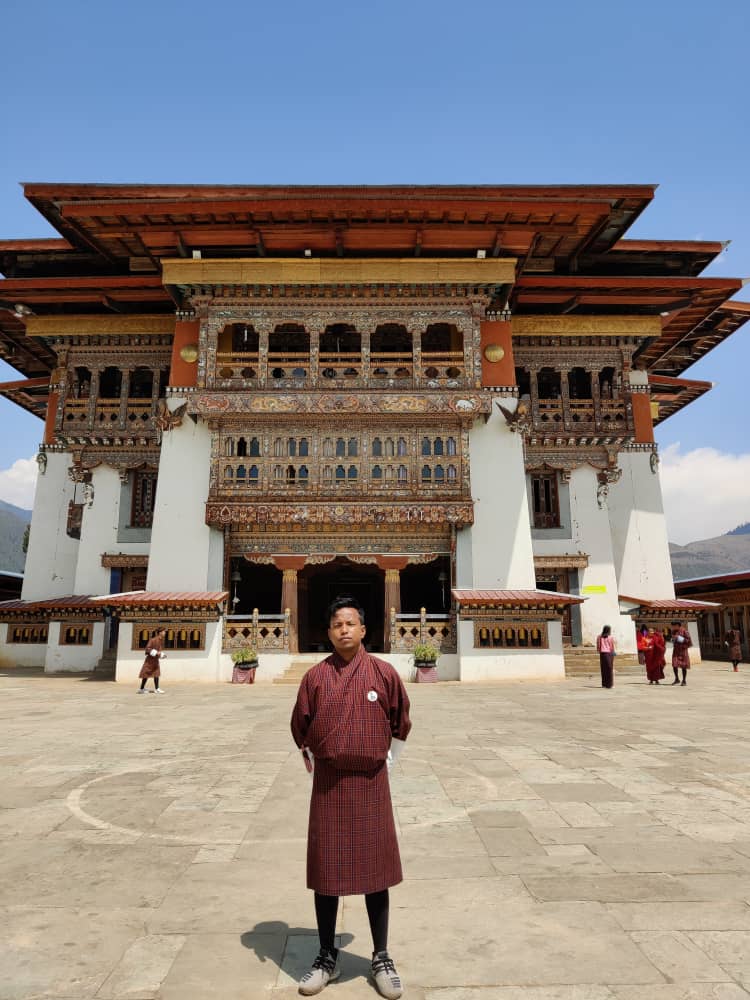![]()
Snails
Three species of snails, new to science were discovered and described from Bhutan by the researchers from the National Biodiversity Centre (NBC), Serbithang, Naturalis Biodiversity Center (Naturalis), Netherlands and Ugyen Wangchuck Institute for Conservation and Environmental Research (UWICER), Bumthang. The three newly described species are: Rahula kleini Gittenberger, Leda & Sherub, Rahula trongsaensis Gittenberger, Leda & Sherub, and Erhaia wangchuki Gittenberger, Sherub &Stelbrink. The type materials of these newly described species are deposited at the National Biodiversity Centre’s invertebrate repository. With these discoveries, as of July 2017, the total snails and slugs (Molluscs) of Bhutan stands at 120 species. However, the researchers expect that the number could be close to 200, because nearly every new locality brings in one or more species, either new to science or new record for Bhutan.
Rahula kleini is named after the Mr. Cornelis Klein, Bhutan’s Honorary Consul of the Netherlands and one of the initiators of Bhutan Invertebrate Project. Type material of R. kleini n. sp. was collected in 2015 from Mongar Dzongkhag at an altitude of 2300 meters above sea level (masl). The samples were collected by Prof. Edmund Gittenberger (Naturalis) and Mr. Pema Leda (NBC). This tiny shell measures at 3×2.7mm. (Fig. 1).The shells are globular conical, 3mm high, with radial riblets covering the entire teleoconch.
Rahula trongsaensis is named after Trongsa Dzongkhag as the species was found in Trongsa in 2015 by Prof. Edmund Gittenberger and Mr. Pema Leda at an altitude of 2210 masl. R. trongsaensis is smaller than R. kleini, measuring about 2.3×1.9mm (Fig. 2).The shells of R. trongsaensis are conical, with radial riblets only above the sharp peripheral keel with narrow umbilicus. This two new species were described and published in July, 2017 issue of the Journal of Conchology (2017), vol. 42, No.6.These species are expected to be found in India as well.
Erhaia wangchuki was collected accidently by Prof. Edmund Gittenberger in 2015 from Thimphu at an altitude of 2825 masl. In addition, in 2015, Mr. Jigme Wangchuk of UWICER found the species in Wangdue Phodrang at 2883 meters above sea level. This species is described using DNA analysis as it is difficult to identify using only the shells. The shells of this species are conical, broader than high, with a flat apex, and teleoconch whorls are broadly shouldered and separated by a deeply incised suture. The holotype of this species is the largest shell and measures 2.2×1.2mm. It is expected that these snails may be distributed in China, India and Nepal. (Fig. 3). Erhaia wangchuki is the only genus with a single species recorded from Bhutan till date.
Erhaia wangchuki is named after Mr. Jigme Wangchuk of UWICER, who discovered this minute snail. A journal paper has been published in ZooKeys 679(June 2017, https://zookeys.pensoft.net/articles.php?id=13326).
The study of molluscs was initiated about four years ago as a collaborative project between NBC, UWICER, and the Naturalis, under the coordination of NBC and with funding support from Naturalis and Bhutan Trust Fund for Environmental Conservation (BTFEC).

Fig. 1. Rahula kleini

Fig. 2. Rahula trongsaensis

Fig. 3. Erhaia wangchuki
Flora
Another interesting discovery is the addition of a new floral species.
Roscoea megalantha Tosh.Yoshida & R.Yangzom was described by researchers Mrs. Rinchen Yangzom from National Biodiversity Centre, Mr. T. Yoshida of Blue Poppy Society of Japan, and Dr. M. F. Newman from the Royal Botanic Garden Edinburgh Scotland, UK. The plant was first described based on the specimens collected from eastern Bhutan in 2014 at an elevation of 2200m. The vouchers of type specimens are deposited at the National Herbarium (THIM), Serbithang and Herbaria of the University of Tokyo (TI) and Royal Botanic garden, Edinburgh (E).
Roscoea megalantha belongs to Zingiberaceae family. The species name ‘megalantha’ comes from Greek for large flower. The flowers are white with purple streaked in the middle (Fig. 4). The new species is distinguished from related species in having white flower with purple markings in the middle and corolla tube clearly exerted from calyx.
Currently, including this recent discovery, Bhutan has three species of Roscoea, namely, R. alpina, R. bhutanica and R. megalantha
This discovery is the result of several intensive botanical excursions and field work carried out as part of the collaborative research and partnership between the National Biodiversity Centre, Ministry of Agriculture and Forests of Bhutan and the Blue Poppy Society, Japan.

Fig. 4. Roscoea megalantha


